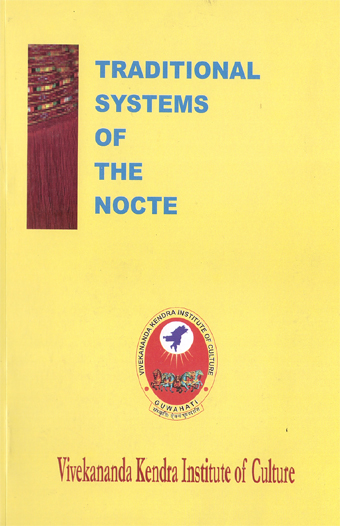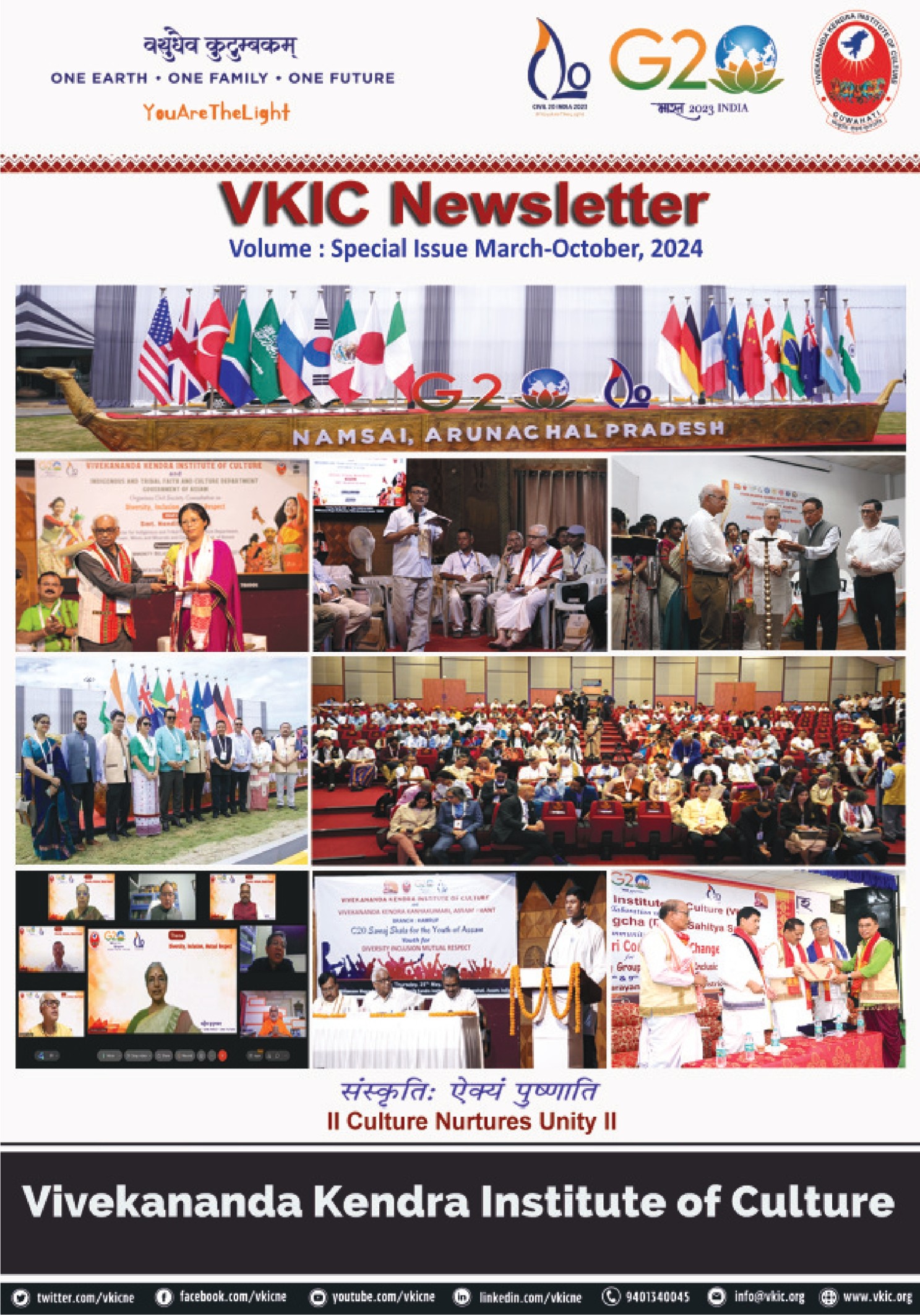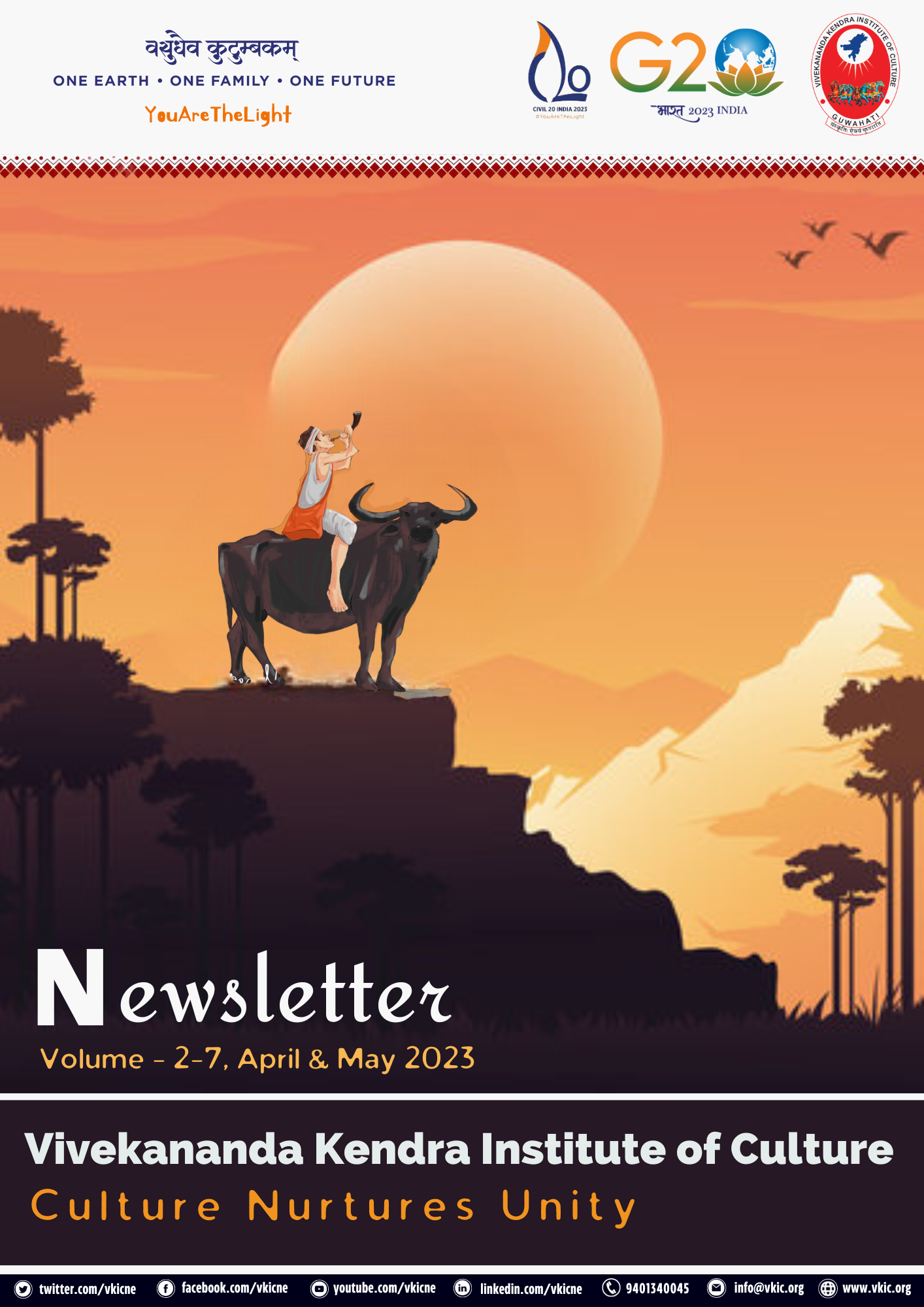
In this edition, Vivekananda Kendra Institute of Culture put forward a book reviewed on Traditional Systems of the Nocte.
The book entitled “Traditional Systems of the Nocte” reviewed by Ma. Sharmistha Nandi Paliwal is a compilation of articles based on the seminar on “Traditional System: Change and Continuity amongst the Nocte of Tirap district of Arunachal”. Held in December 2003, this seminar is a part of the series titled - Traditional System Change and Continuity conducted by VKIC to study the customs and cultures of various communities of the North East.
The book contains 15 research papers that touch upon various topics starting from the origins of Nocte to their social systems and culture, description of their deities, rituals, marriage systems, family structure, festivals as well as their judicial and village organization system. A research paper is also devoted to their healing tradition. This book is based on extensive field work and research done by the Noctes themselves thus ensuring authenticity.
Two separate research papers, deals about the origin of the Noctes. It is observed that though there is no written record of the Nocte community, the entire history of their origins, culture and traditions have been passed on orally since time immemorial.
It is believed that the Noctes are of Indo-Mongoloid origin. Who do not have one common origin but are actually people of varied origins. The community has seven sub-tribes that comprise the Nocte Community. However, the overall charge lies in the hands of the Bordura and the Namsang chiefs of the community.The fact that the Nocte language is a combination of various sub-dialects or japs and does not have a common language like other communities of Arunachal also adds to the hypothesis. The Khiti-Khila is the Hakhunthong group of the Nocte which highlights present-day threats on the Nocte community as an overwhelming majority have embraced Christianity. Forceful conversions and Government apathy towards stopping this menace and devising means of preserving and maintaining the culture and tradition of the Noctes are other threats that need to be addressed. Though hailing from several clans, the Noctes are unified by their supreme deity Joban.
The book also deals with the marriage system of the Nocte. The Noctes marriage system may be grouped under three main heads- Social, Love and Sudden marriage. The Marriage System in the Nocte Society dwells in five different customs followed in a Nocte social marriage starting from engagement to the final marriage ceremony. An interesting observation is that all events of the Nocte marriage is intrinsically linked with agriculture and livestock. Starting from the brides’ kin being offered jumin or rice beer in a Laikon (glass made of leaves) in the Tok-Chha ceremony to the Chha-Yikoo ceremony where the bride’s family offers paddy to the groom’s family to the completion of the ceremony in the Too-Kai-Koo ceremony where katchu seeds are planted by the relatives of the bride and groom after which the couple start living together. In fact, divorce settlement is also done by imposing fines of land, livestock, jewelries and musical instruments. The process of selection of the bride or groom which is based on understanding and mutual respect traditionally termed as Tansong is also another aspect of the book. The ideal age for marriage is suggested as 22 to 24 years. In fact, betrothed couples were not allowed to stay together before 16 to 18 years of age. Cross marriages amongst family members were allowed though not preferred. In general, Noctes practice monogamy and polygamy was mostly confined to the chiefs. The marriage system of the Chasa Village inhibited by the Wangcho group belonging to the Nocte community is almost similar to the general system of marriage in Nocte community. However, variations may be there in rituals from village to village. The book also reflects that, the indigenous systems are dying out due to intrusion of outside religions and urbanization.
Various aspects of the Nocte family structure are brought forward to understand how clans are formed, the origin of families, the family structure and framework as well as the economic and decision-making responsibility and process in a Nocte traditional family.
The Traditional healing system highlights how diseases are categorized based on the seriousness of the ailment. Traditionally diseases were believed to be caused by some curse of malevolent entities. For less serious ailments prayers and offerings of eggs, chicken or rice beer was considered important. While for serious diseases like small pox, leprosy and tuberculosis isolation of the family member is practiced while ensuring the delivery of food and essential items were maintained by the families.
The Noctes have a highly evolved system of self-governance highlighting different aspects of governance like village organization, judiciary systems and laws such as marriage laws.
Chao is the most significant festival or Loku of the Noctes. It is an agricultural festival celebrated in October and November that was earlier confined to villages and is celebrated for three days rejoicing the hard work done to plough and harvest the produce of the fields. The first common Loku of the Noctes was celebrated in 1970. However, the folk songs that are sung in the Khappa dialect that is unintelligible for which the meaning and the inherent values of the songs cannot be understood or preserved. Besides Chao, Ronglo festival is another festival that is celebrated in all Nocte areas to bid the last farewell to the departed souls of the near and dear ones.


